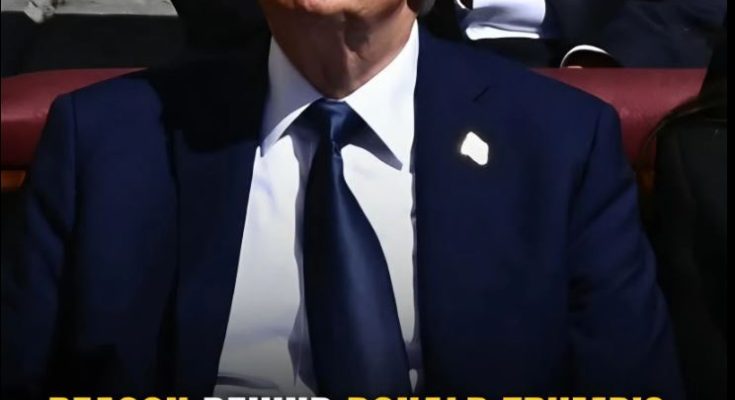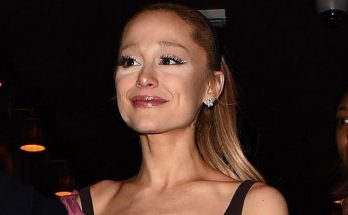At a funeral attended by kings, queens, presidents, and prime ministers, the seating arrangement at Pope Francis’ farewell ceremony in St Peter’s Square raised eyebrows around the world — and perhaps none more so than the sight of Donald Trump in a front-row seat while Britain’s Prince William and Prime Minister Sir Keir Starmer were relegated to the sidelines.
The solemn open-air mass, held in front of St Peter’s Basilica and broadcast to millions globally, welcomed a staggering turnout: 55 heads of state, 14 heads of government, and 12 reigning monarchs. Despite the grandeur, strict protocols governed who sat where — a hierarchy dictated less by power or popularity and more by nationality, tradition, and, surprisingly, the French alphabet.

At the very top of the steps sat Argentina’s president, Javier Milei. As Pope Francis’ home country, Argentina naturally received pride of place. Close behind were Italian dignitaries, with Italy being not only the Vatican’s host nation but also central to Catholicism’s global administration, given the Pope’s role as bishop of Rome.
After Argentina and Italy, it was not fame nor diplomatic seniority that determined seating, but the French language. French remains the official language of diplomacy, and accordingly, nations were ordered alphabetically — not in English but en français. Allemagne (Germany) sat near the front, and États-Unis (United States) followed not far behind, allowing Donald Trump, leading the American delegation, to secure a prominent seat.

It was a surprising sight for many, especially as Trump had already caused a stir earlier in the day for breaching the Vatican’s strict funeral dress code by wearing a mid-blue suit and shiny blue tie instead of the required all-black ensemble. Despite the controversy, his seating placement ensured he was centrally positioned, directly alongside French President Emmanuel Macron and close to the Pope’s coffin as it was carried through the basilica.
Meanwhile, farther back, Prince William — attending his first international funeral on behalf of King Charles III — found himself seated in the third row alongside Prime Minister Sir Keir Starmer and German Chancellor Olaf Scholz. Under the French alphabet’s ordering, the United Kingdom (Royaume-Uni) came relatively late, pushing British representatives further from the ceremonial heart of the service.
Initially, it had been expected that Prince William would sit among his fellow heirs apparent, such as Norway’s Crown Prince Haakon and Crown Princess Mette-Marit. However, this part of the preliminary seating plan did not materialize. Instead, the prince was seen exchanging polite words with President Trump and First Lady Melania Trump inside the basilica before the service, as well as with President Macron and his wife, Brigitte.
Jordan’s King Abdullah and Queen Rania, representatives of another monarchy, sat in the second row, ahead of Prince William — emphasizing how royalty was prioritized within their national delegations, but still had to yield to the rules set by country name.
Adding another layer to the curious arrangement, no distinction was made between Catholic and non-Catholic monarchs, nor between Catholic and non-Catholic heads of state. Even former U.S. President Joe Biden, a practicing Catholic, was seated much further back because he was not part of the official American delegation.

The Vatican had been meticulous in following tradition, giving Argentina and Italy their due respect, but allowing the French language’s diplomatic precedence to shape the remaining rows. It was a reminder of the Church’s historical roots — and the continued influence of old-world protocol in modern geopolitics.
Pope Francis, who passed away at 88 from a stroke on Easter Monday, was laid in a simple coffin after a three-day lying in state. His funeral mass included a mix of Latin, Italian, English, and Spanish readings, prayers, and blessings, drawing a truly international crowd reflective of the global Catholic community he served.
Despite the occasional awkwardness and breaches of protocol — including Trump’s dress-code faux pas and the reshuffling of expected seating — the day was primarily one of solemn unity. As Francis’ coffin was carried past the dignitaries, even the most controversial figures joined in quiet applause, paying homage to a Pope often referred to as the “People’s Pope.”
In the end, the intricacies of diplomatic tradition, national pride, and centuries-old language rules determined the final seating arrangements — a powerful reminder that, even amid the modern complexities of global leadership, old customs still hold sway.



